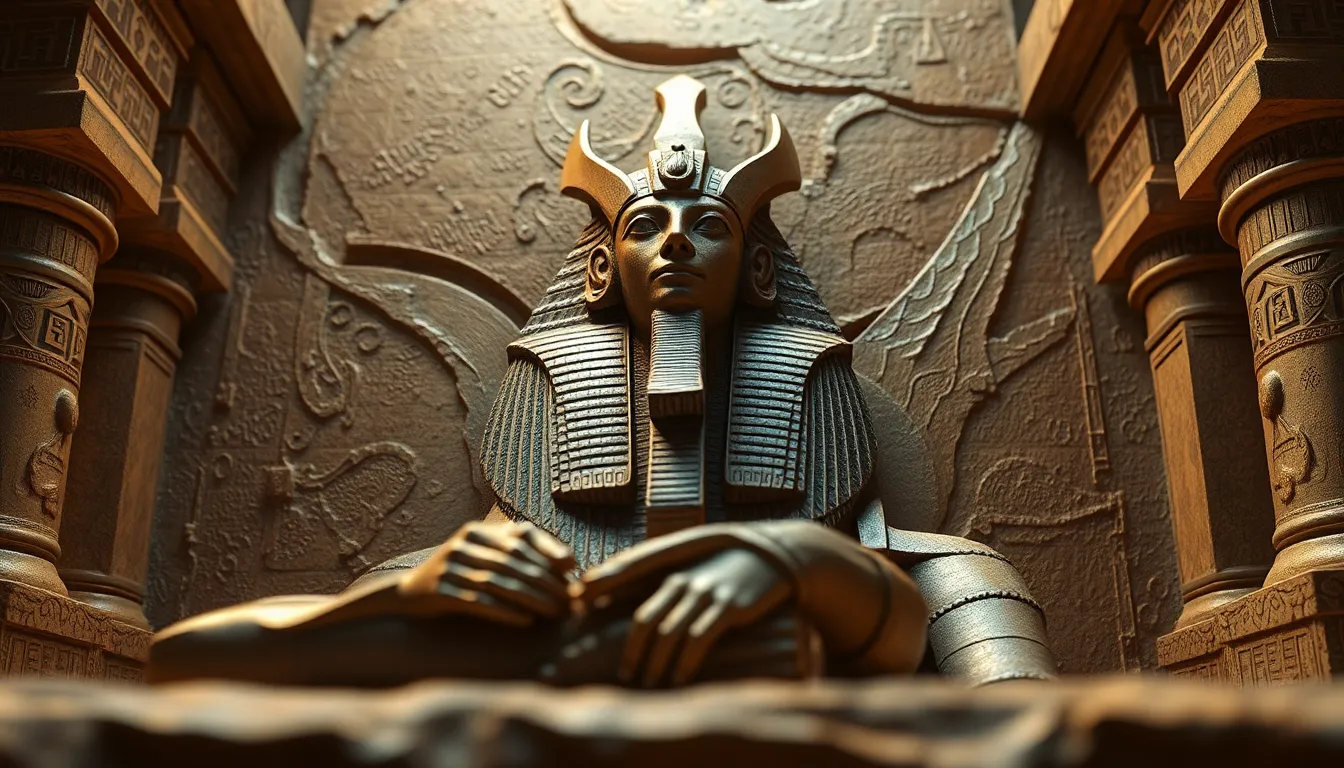The Role of Funerary Literature in the Cult of Osiris
I. Introduction
Funerary literature refers to the body of texts that were created to assist the deceased in their journey to the afterlife. These texts served not only as guides but also as tools for protection and empowerment in the realm beyond death. In ancient Egyptian religion, the Cult of Osiris played a pivotal role in shaping the beliefs surrounding the afterlife, particularly through the lens of Osiris, the god of the underworld, resurrection, and eternal life.
This article explores the intricate relationship between funerary literature and the Cult of Osiris, highlighting its significance in understanding ancient Egyptian beliefs and practices regarding death and the afterlife.
II. Historical Context of the Cult of Osiris
The Cult of Osiris originated in ancient Egypt and became one of the most influential religious movements in the region. Osiris, believed to be the first pharaoh who was killed and resurrected, symbolized the cycle of life, death, and rebirth. The myths surrounding Osiris, his wife Isis, and his son Horus are foundational stories that illustrate the themes of sacrifice, resurrection, and divine kingship.
- Origins and Development: The worship of Osiris can be traced back to the Early Dynastic Period, with evidence of his cult growing significantly during the Middle Kingdom.
- Key Myths: Osiris’s death at the hands of his brother Set, his resurrection by Isis, and the subsequent birth of Horus are central myths that underscore his importance.
- Significance in Religion: Osiris became synonymous with the afterlife, providing a model for the dead to aspire to through the promise of resurrection.
III. Overview of Funerary Literature
Funerary literature encompasses a variety of texts that were created to guide and protect the deceased in the afterlife. These texts evolved over time, reflecting changes in society, beliefs, and practices.
- Types of Funerary Texts:
- Pyramid Texts: The oldest religious texts, inscribed in the pyramids of the Old Kingdom, aimed at ensuring the pharaoh’s safe passage to the afterlife.
- Coffin Texts: Developed during the Middle Kingdom, these texts were written on coffins and were accessible to non-royal individuals, broadening the audience for funerary literature.
- Book of the Dead: A compilation of spells and rituals intended to aid the deceased in navigating the afterlife, it became popular in the New Kingdom.
- Evolution Over Time: As Egyptian society evolved, so did funerary literature, becoming more inclusive and elaborate, reflecting the beliefs of different social classes.
- Themes and Motifs: Common themes include the journey through the Duat (the underworld), judgment by Osiris, and the quest for immortality.
IV. Funerary Literature’s Role in Osirian Beliefs
Funerary literature served multiple purposes in the context of Osirian beliefs, offering guidance and assurance to the deceased.
- Instruction for the Afterlife Journey: Texts provided detailed instructions on how to navigate the challenges of the underworld, including encounters with various deities and obstacles.
- Depiction of Osiris: Osiris is often portrayed as the judge of the dead, weighing the heart of the deceased against the feather of Ma’at to determine their fate.
- Rituals and Spells: Many spells aimed at facilitating resurrection and achieving immortality, emphasizing the transformative powers of Osiris.
V. Symbolism and Imagery in Funerary Literature
Symbolism and imagery play crucial roles in funerary literature, enhancing the understanding of Osirian beliefs.
- Symbols Associated with Osiris:
- The green skin of Osiris symbolizes fertility and rebirth.
- The atef crown, representing his sovereignty over the afterlife.
- Iconography: Funerary texts are often accompanied by elaborate imagery, depicting scenes of judgment, resurrection, and the deceased’s interaction with Osiris.
- Text and Image Relationship: The interplay between written texts and visual representations deepens the narrative of the afterlife, creating a holistic understanding of beliefs.
VI. Funerary Literature as a Social and Political Tool
Beyond its religious significance, funerary literature also functioned as a social and political instrument.
- Reinforcing Authority: Funerary texts helped legitimize the power of the priesthood and the pharaoh, portraying them as mediators between the gods and the people.
- Reflections of Status: The content and quality of funerary texts often reflected the social status of the deceased, with the elite having access to more elaborate texts.
- Impact on Burial Practices: Funerary literature influenced the design of tombs and burial practices, leading to elaborate constructions aimed at honoring the deceased and ensuring their successful journey to the afterlife.
VII. Modern Interpretations and Discoveries
Recent archaeological findings have shed light on the significance of funerary literature and the Cult of Osiris, prompting scholarly discussions and interpretations.
- Archaeological Findings: Discoveries of tombs and artifacts containing funerary texts have provided insights into the beliefs and practices of ancient Egyptians.
- Scholarly Interpretations: Researchers continue to debate the meanings and implications of these texts, considering their impact on our understanding of ancient Egyptian culture.
- Contemporary Relevance: Funerary literature remains a critical area of study, illuminating the complexities of ancient Egyptian religion and society.
VIII. Conclusion
In summary, funerary literature is integral to understanding the Cult of Osiris and the ancient Egyptians’ beliefs about the afterlife. These texts not only provided guidance and protection for the deceased but also reinforced social and political structures within ancient Egyptian society. The lasting legacy of Osiris and his associated funerary literature continues to influence contemporary studies, offering rich avenues for future research and exploration.




